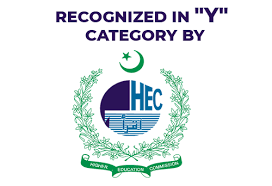Deciphering Hate Speech in Multimodal Pakistani Political Memes on X
Abstract
 Abstract Views: 0
Abstract Views: 0
In today’s world, memes have emerged as an effective tool to disseminate political discourse, often presented in an entertaining way. However, they can also make society more divided by spreading hate speech. Therefore, the current study aimed to explore hate speech indicators in multimodal memes on X (formerly known as Twitter) for a time period of three months (Dec 2023-Feb 2024). The study was conducted in the context of the general elections 2024 in Pakistan. The analysis utilized a combination of the Fairclough model and the multimodal framework of critical discourse analysis to identify and analyze nine indicators of hate speech. These indicators comprised both established indicators, such as dehumanization, character assassination, and name-calling, as well as context-specific expressions of criticism directed at political parties and institutions such as the judiciary and the Election Commission of Pakistan, particularly in response to the allegations of electoral misconduct. The findings suggested that memes are not only a tool to disseminate humor and entertainment but also function as a way for people to show their dissatisfaction and express different opinions. As per critical discourse analysis, the selected memes reflected underlying political tensions and contested narratives of power that surfaced during the elections. Such representations may challenge dominant institutions and contribute to the expression of discontent within the sociopolitical environment of Pakistan
Downloads
References
Adegoju, A., & Oyebode, O. (2015). Humour as discursive practice in Nigeria’s 2015 presidential election online campaign discourse. Discourse Studies, 17(6), 643–662. https://doi.org/10.1177/1461445615602378
Akbar, M., & Safdar, A. (2023). Politics of hate and social media: Thematic analysis of political hate discourses on Facebook. Global Social Sciences Review, 8, 364–375. https://doi.org/10.31703/gssr.2023(VIII-II).33
Atalay, G.E. (2015). Use of multimodal critical discourse analysis in media studies. The Online Journal of Communication and Media, 1(3), 40–43.
Baig, K., Shehzadi, M., & Hussain, M. S. (2023). A socio-cognitive critical discourse analysis of the power of social media memes in political domain. Pakistan Journal of Society, Education and Language, 9(2), 13–25.
Bhatti, H. (2024, January 02). SC intends to wrap up lifetime disqualification case at next hearing to prevent ‘confusion’ for ROs. Dawn. https://www.dawn.com/news/1802576
Bilal, R. (2023, December 07). Imran challenges five-year disqualification in LHC. Dawn. https://www.dawn.com/news/1795870
Curtis, J. (2024, Feburary 13). Politics in Pakistan 2022-24 and upcoming elections. UK Parliment. https://commonslibrary.parliament.uk/research-briefings/cbp-9883/
Durrani, H., & Naseer, D. M. (2021). Hate speech and culture of trolling on social media. ResearchGate. https://doi.org/10.13140/RG.2.2.16077.56806
Fairclough, N. (1992). Discourse and social change. Polity Press.
Fairclough, N. (2013). Critical discourse analysis: The critical study of language. Routledge.
Fatima, K. (2020). Manipulation of political discourse of Pakistan on social media. Research Journal of Language and Literature, 5, 137–161.
Halversen, A., & Weeks, E. (2023). Memeing politics: Understanding political meme creators, audiences, and consequences on social media. Social Media+ Society, 9(4). Advance online publication. https://doi.org/10.1177/20563051231205588
Helferich, J. (2021, July 11). The power of memes in political campaigning. Oxford Political Review. https://oxfordpoliticalreview.com/2021/07/11/the-power-of-memes-in-political-campaigning/
Javed, M., Jamil, M. B., & Ahmad, S. (2022). Meme as a tool of social and political commentary: discourse analysis of memes in Pakistani social media. Pakistan Journal of Humanities and Social Sciences Research, 5(2), 1–11.
Karjo, C. H., & Ng, A. (2018, May 8–9). Analyzing discourse of hate speech in Facebook: A case study of Jonru’s posts [Paper presentation]. Proceedings of Language in the Online & Offline World 6: The Fortitude, Surabaya, Indonesia.
Laurent, C. D., Glăveanu, V. P., & Literat, I. (2021). Internet memes as partial stories: Identifying political narratives in coronavirus memes. Social Media+ Society, 7(1), 1–13. https://doi.org/10.1177/2056305121988932
Mehboob, A. B. (2024, February 17). Delay in election results. Dawn. https://www.dawn.com/news/1814885
Mehtab, U. (2024, January 08). Imran says ‘verbally dictated’ article published in The Economist. Dawn. https://www.dawn.com/news/1804225
Nendauni, L. (2020). Name-calling as a communicative strategy in selected political cartoons from South African press [Unpublished doctoral dissertation]. University of Venḓa.
Paracha, N. F. (2011, December 27). The jiyala: A political and spiritual history. Dawn. https://www.dawn.com/news/683564/the-jiyala-a-political-and-spiritual-history
Pramanick, S., Dimitrov, D., Mukherjee, R., Sharma, S., Akhtar, M. S., Nakov, P., & Chakraborty, T. (2021). Detecting harmful memes and their targets. Arxiv Preprints. https://doi.org/10.48550/arXiv.2110.00413
Papcunová, J., Martonˇcik, M., Fedáková, D., Kentoš, M., Bozogá ˇ nová, M., Srba, I., Moro, R., Pikuliak, M., Šimko, M., & Adamkoviˇc, M. (2021). Hate speech operationalization: A preliminary examination of hate speech indicators and their structure. Complex & intelligent systems, 9(3), 2827–2842. https://doi.org/10.1007/s40747-021-00561-0
Rastogi, S., & Kashyap, S. (2019, April 5–7). Political memes and perceptions: A study of memes as a political communication tool in the indian context [Paper presentation]. Proceedings of the 5th World Conference on Media and Mass Communication, Kuala Lumpur, Malaysia.
Samoilenko, S. A. (2019). Character assassination and reputation management in the context of mediated complexity. In A. Ledeneva (Ed.), The global public relations handbook (pp. 268–282). Routledge.
Shafiq, Z. (2021). Discourse of political hate speech on Twitter in Pakistan. Harf-o-Sukhan, 5(4), 230–245.
Shifman, L. (2013). Memes in a digital world: Reconciling with a conceptual troublemaker. Journal of computer-mediated communication, 18(3), 362–377. https://doi.org/10.1111/jcc4.12013
Siddiqua, A. (2021). Use of cyber hate in the electoral campaigns by the mainstream political parties of Pakistan. Humanities & Social Sciences Reviews, 9(2), 325–332. https://doi.org/10.18510/hssr.2021.9232
Sultana, A., & Khalid, A. (2023). Unmasking political narratives: A study of political memes in Pakistan. Global Digital & Print Media Review, 6(2), 334–353. http://dx.doi.org/10.31703/gdpmr.2023(VI-II).24
The Nation. (2023, November 1). Caretaker PM at LUMS. https://www.nation.com.pk/01-Nov-2023/caretaker-pm-at-lums
Wiggins, B. E., & Bowers, G. B. (2014). Memes as genre: A structurational analysis of the memescape. News Media & Society, 17(11), 1886–1906. https://doi.org/10.1177/1461444814535194
Wodak, R. (2015). The politics of fear: What right-wing populist discourses. Sage Publications.
Copyright (c) 2025 Maria Irum, Shazia Hashmat

This work is licensed under a Creative Commons Attribution 4.0 International License.
Copyrights © Author(s) 2021




